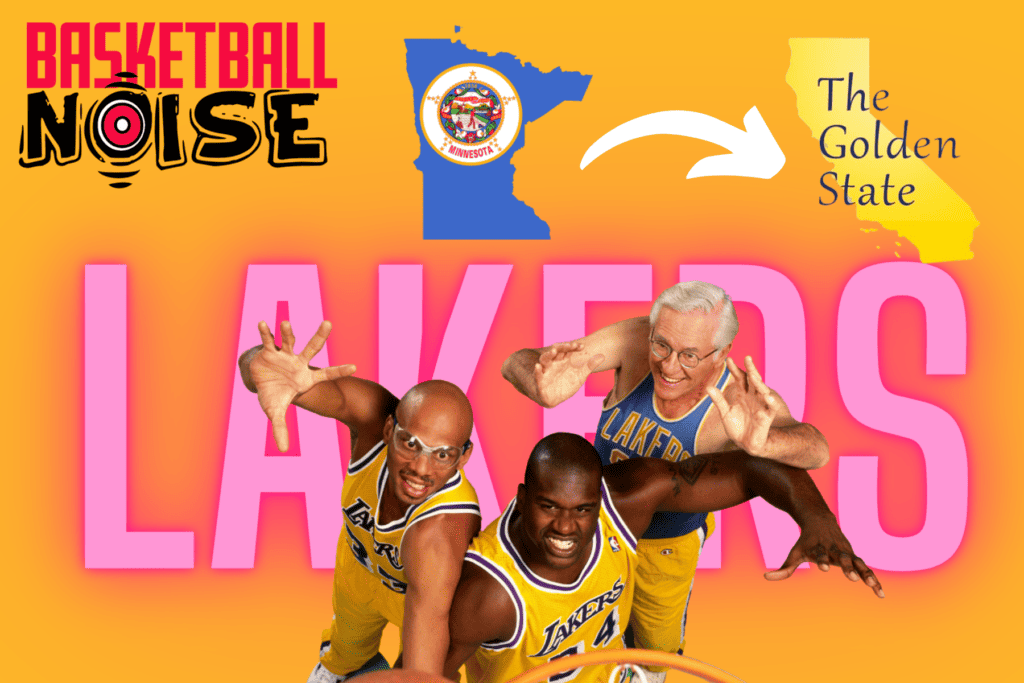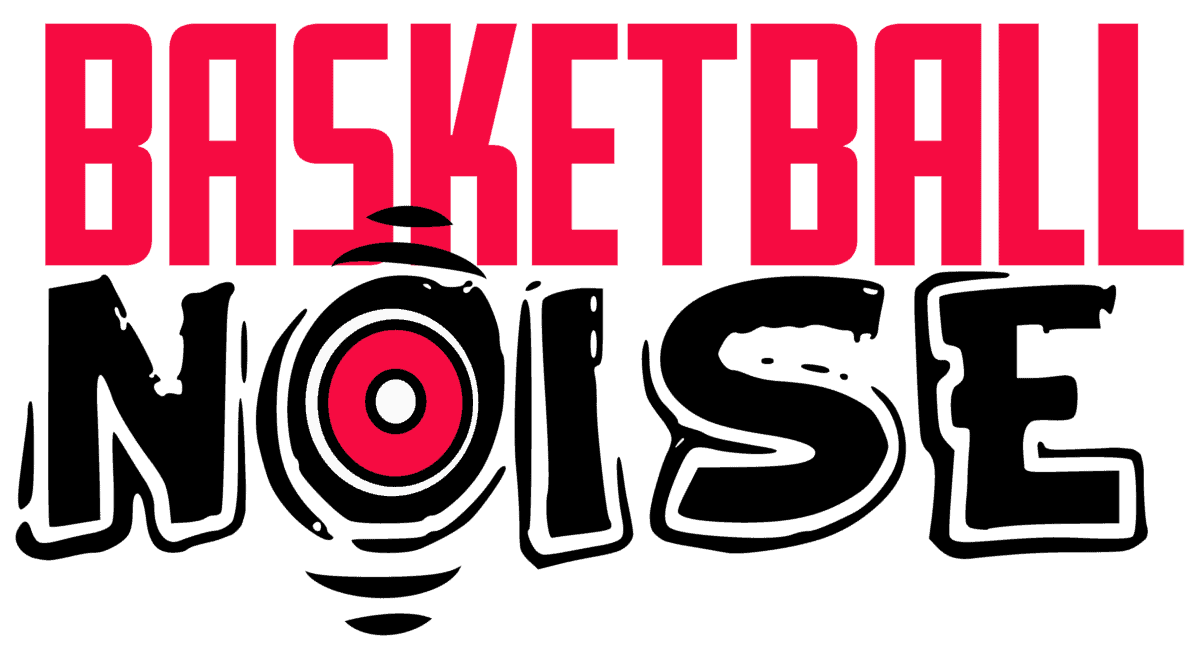The Lakers moved to LA ahead of their 1960-61 season after struggling to regain their prominence following the departure of former center and arguably the NBA’s first superstar, George Mikan. The team which had initially found the inspiration for its name from the state of Minnesota’s nickname, the Land of 10,000 Lakes, opted not to abandon its moniker once it moved to California. Despite the scarcity of lakes in the latter the name stayed and caught on.

While many theories have emerged over the years as to why the franchise made the decision to switch cities, only one seems to have any merit.
Formation and Early Struggles
The Lakers initially began as the Detroit Gems – an expansion team of the now-defunct National Basketball League (NBL) – in 1946. Like many cities in the United States (US), Detroit had experienced a boom in the aftermath of the Second World War and already had professional teams for baseball, football, and ice hockey.
At the time, the NBL was one of three professional basketball leagues (the other two being the Basketball Association of America/BAA and the American Basketball League/ABL) and sought to solidify its position as the most established of the three by starting franchises in the leading metropolises.
Since starting a franchise is no easy endeavor, the NBL entrusted the responsibility to two professionals – Maurice Winston (a successful jeweler) and C. King Boring (an accomplished accountant). As a nod to the former’s profession, the new team was named the Detroit Gems with many viewing it as a direct competitor to the Detroit Falcons – a BAA team that was founded around the same time but folded after only one season.
Like any typical expansion team, the Gems struggled in their inaugural season (1946-47) and finished with a measly record of 4-40. Capitalizing on their misfortunes, Minnesota businessmen Benjamin Berger and Morris Chalfen bought the team from Winston for $15,000 and renamed it the Lakers. Sidney Hartman (a respected sports journalist and Minneapolis native) helped put together the deal and land the then-new team with its first head coach in John Kundla.
Mikan’s Arrival and Striking Gold
George Mikan started his professional basketball career as part of the Chicago American Gears, whom he joined after a successful college career. The three-time NBA scoring champion would not have become a Laker were it not for an overzealous plan by former American Gears owner Maurice White, which caused the team to fold and its players to be equally distributed among the 11 NBL franchises that remained at the time.
The 1948 NBL scoring champion and regular season MVP hit the ground running and led the Lakers, who had put together an impressive squad that included athletic forward Jim Pollard and talented playmaker Herm Schaefer, to back-to-back NBL titles in 1947 and 1948. The Lakers then made a surprise jump to the BAA where Mikan’s dominance continued en route to clinching the 1949 BAA title.
After years of a heated rivalry, the BAA merged with the NBL in 1949 to form the NBA that is known and loved today. Mikan led the Lakers to win the inaugural NBA title in 1950 against Syracuse Nationals. The Lakers were set to repeat as champions but a serious leg injury that limited the 1953 NBA rebounding leader the following postseason dashed their title hopes.
The four-time NBA All-Star nevertheless recovered and overcame roadblocks like the infamous “Mikan Rule” to lead the team to three consecutive NBA titles from 1952 to 1954. The monumental victories officially made the Lakers the first dynasty in NBA history.
Mikan’s Retirement
Though Mikan was a force to be reckoned with on the court, the 1953 NBA All-Star Game MVP was highly susceptible to injury and often played injured. A string of 10 broken bones through to his late 20s greatly contributed to his steady decline and often left the Lakers without the services of the chief scoring weapon. Mikan retired from Basketball after winning the title in 1954 at the peak of his powers.
Following the Lakers on court struggles after his departure he returned for one final season in 1955-56. He was a shell of his former self. Mikan played just 37 games and averaged a subpar 10.5 points, 8.3 rebounds and 1.3 assists, which was a shell of the 23 points, 13 rebounds and 2 assists he had averaged at the height of his powers.
Bob Short and the deal of the century
In 1957 the Lakers looked set to move to St.Louis with an offer of $150,000 on the table. Then owner and Minneapolis local, Ben Burger, gave a consortium of local investors the opportunity to raise $200,000 (including a $20,000 share he put forward himself to stay attached to the franchise) to keep the Lakers in Minneapolis. They came through and in 1957 Bob Short was appointed Chairmen of the 117 member ownership committee. Eventually the amount paid was the same $150,000 offered to move the team to St.Louis.
In his excellent book “Dynasties: The 10 GOAT teams that changed the NBA forever”, Marcus Thpmson breaks down the value of that investment versus the Lakers estimated 2020 value.
In 2020 the Lakers were estimated to be worth $4.4billion and had they actually been sold, the final bill would probably have been a lot more than this. Thornton writes; Factoring inflation that was the equivalent of just $1.4 million.
He goes further to look at the 2020 value with inflation factored in. He works out that in 1957 today’s Lakers would have been valued at $475 million. That’s an incredible return on investment.
The move to LA and a star lit future
Following Mikan’s retirement, the Lakers struggled to both find their winning form and attract the crowds that had once filled their arena to watch the six-time All-BAA/NBA First Team honoree play. The late 1950s were particularly challenging for the franchise but produced a silver lining in the form of the first pick in the 1958 NBA draft, which the Lakers used to select future 11-time NBA All-Star, Elgin Baylor.
Like Mikan, Baylor excelled right out of the gate and won both the NBA Rookie of the Year award and NBA All-Star Game MVP honors in his first season (alongside former St. Louis Hawks power forward/center Bob Pettit). His second season with the Lakers however proved to be disappointing as they only managed to finish with a 25-50 record.
The only silver lining from the Lakers’ disastrous 1959-60 season was the second pick in the 1960 NBA Draft, which they used to select point guard Jerry West. Within a week of selecting the 14-time NBA All-Star, then Lakers Chairman Bob Short relocated the team to Los Angeles.
Moving to LA was in-arguably the best decision the Lakers Franchise ever made. The franchise has since won an impressive 12 NBA world championships and is currently tied for the most in NBA history with their archrivals – the Boston Celtics.
Among the many star players who have filled their ranks over the years include Kareem Abdul-Jabbar, Wilt Chamberlain, Magic Johnson, James Worthy, Kobe Bryant, LeBron James, and Anthony Davis, proving that LA is indeed the city of stars.
